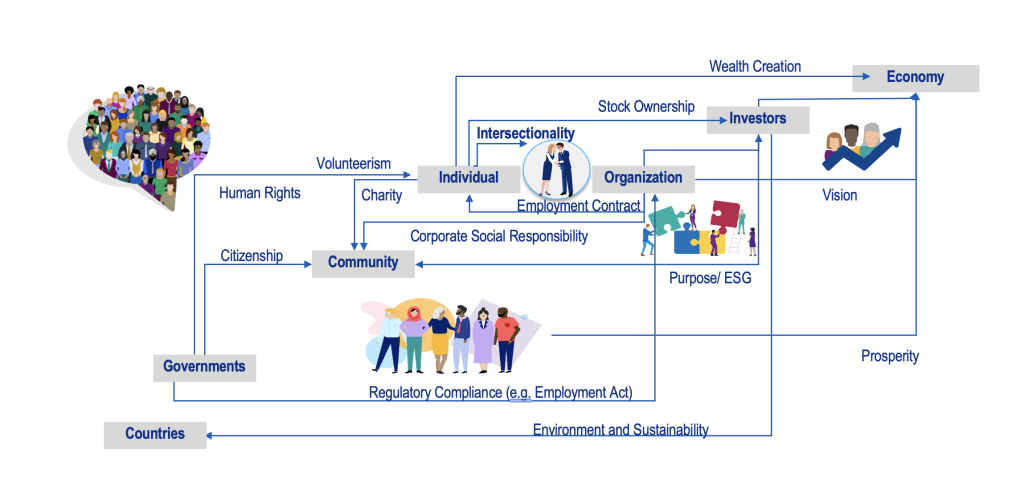2.1 What is Inclusive Leadership?
Inclusive leaders model the change by leading inward and outward:
- Leaning inward focuses on actions a leader can take to self-reflect on their learning, growth, and impact (e.g. curiosity, humility, and courage)
- Leading outward focuses on actions a leader can take to ensure their team members are treated equitably and fairly, empowered, and are able to grow (e.g. allyship, accountability, ownership)
What key traits do inclusive leaders exhibit?
- Visible commitment: Leaders articulate genuine and authentic commitment to EDI, challenging the status quo, and holding others accountable
- Humility: Leaders are able to recognize their shortcomings, are aware of their capabilities, and create safe spaces for listening (feedback), learning, and growth
- Awareness of bias: Leaders seek to understand their own unconscious biases as well as biases that are embedded within the organization
- Curiosity about others: Leaders have an open mindset, are curious to learn about others, actively listen without judgment, and empathize with those around them
- Cultural intelligence: Leaders are attentive to the cultures of their employees and seek to learn and adapt to support them
- Effective collaboration: Leaders place an importance on working as a team, empowering their employees, embracing diversity of thought, and creating a psychologically safe space
- Compassion: Leaders have a genuine concern for their people and positive intentions to support them
- focuses on actions a leader can take to ensure their team members are treated equitably and fairly, empowered, and are able to grow (e.g. allyship, accountability, ownership)
From the perspective of leaders, the most valuable inclusive leadership trait is their visible commitment to advancing EDI within the organization.
From the perspective of employees, the most valuable inclusive leadership trait is their leader’s awareness and visible acknowledgement of unconscious bias combined with the following two behaviours:
- Humility, as this acknowledges that the leader is eager to address their own biases and work towards improvement through feedback;
- Empathy and perspective taking, as this indicates to employees that they are heard, valued, and supported by their leader.




